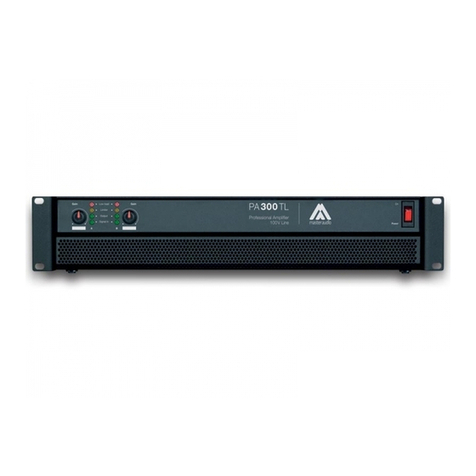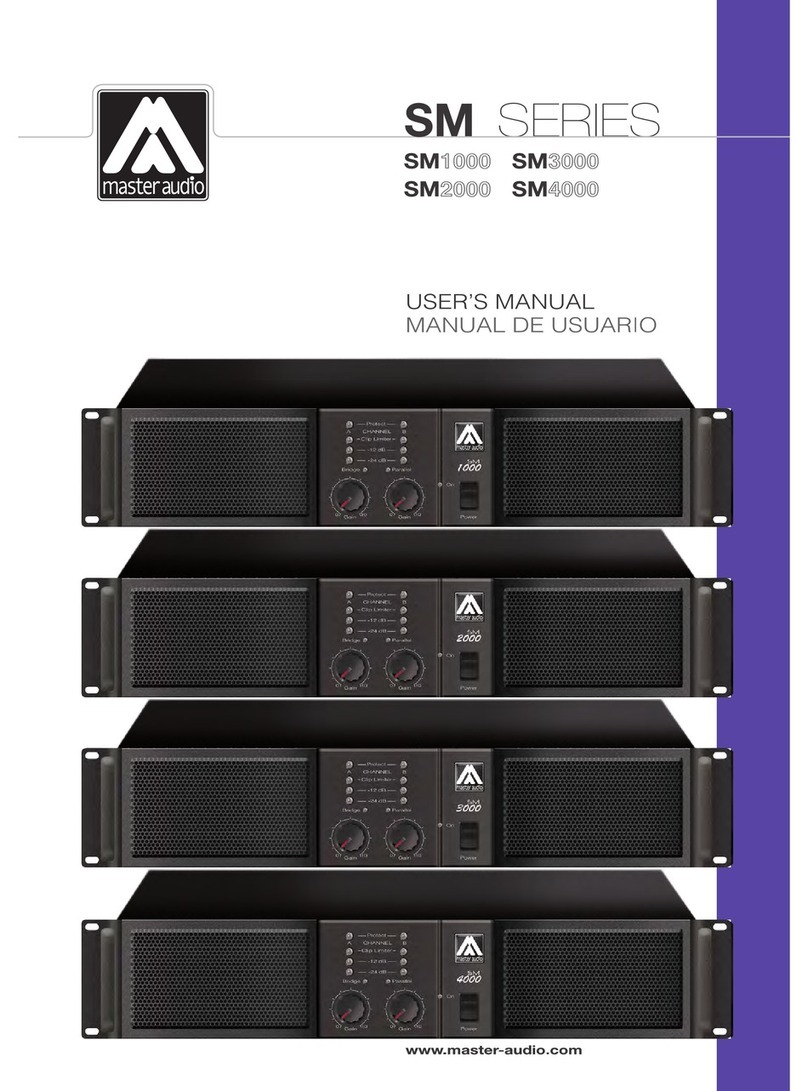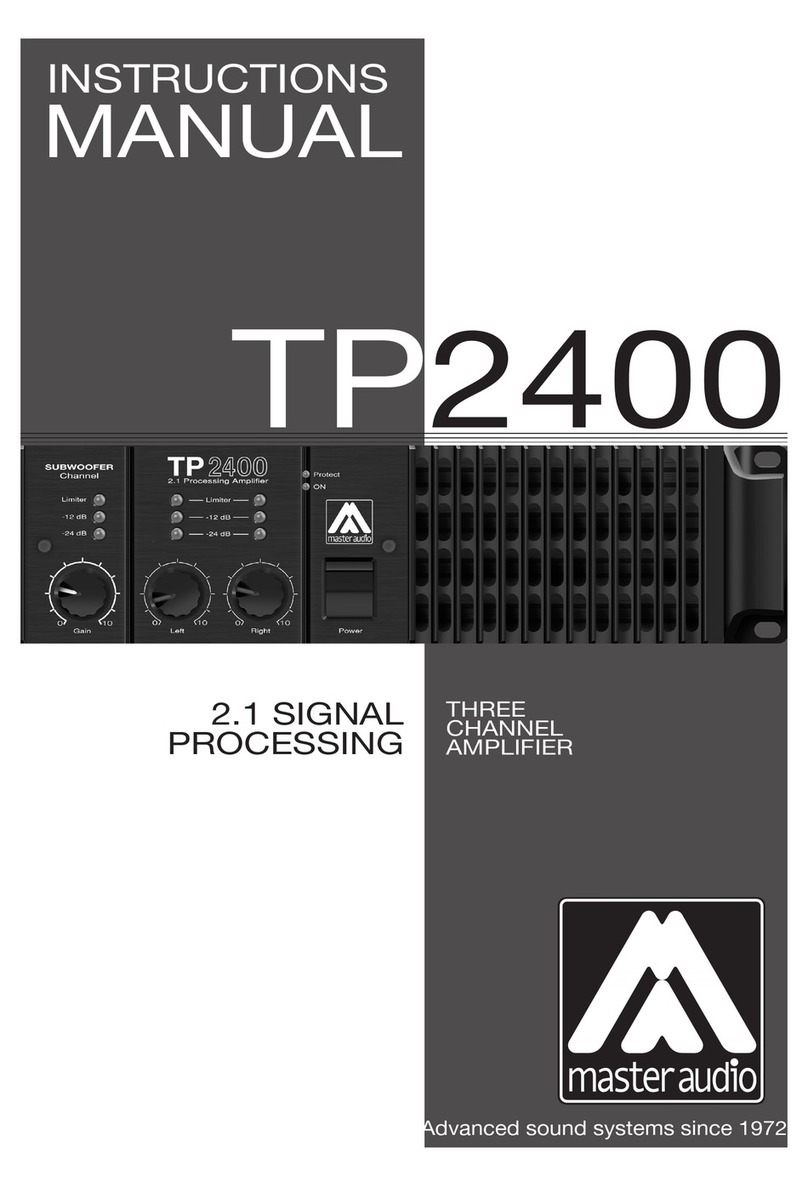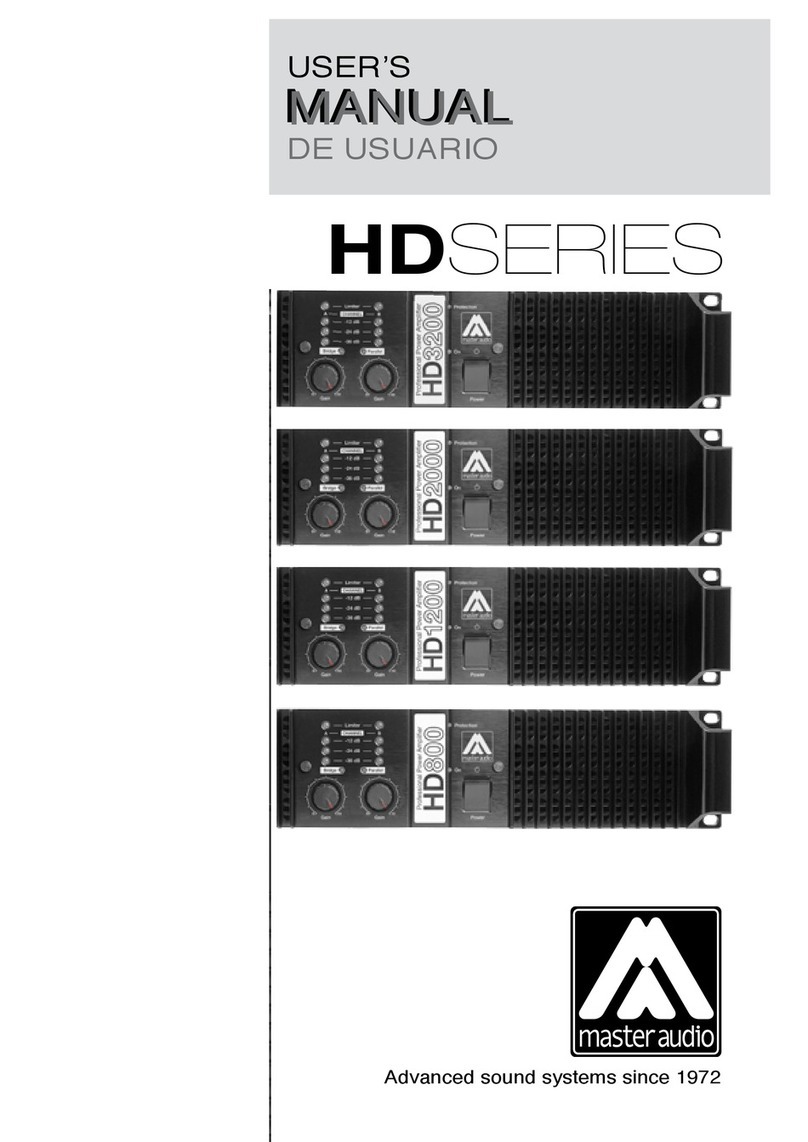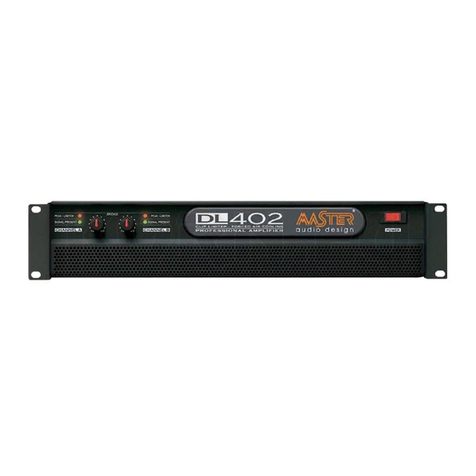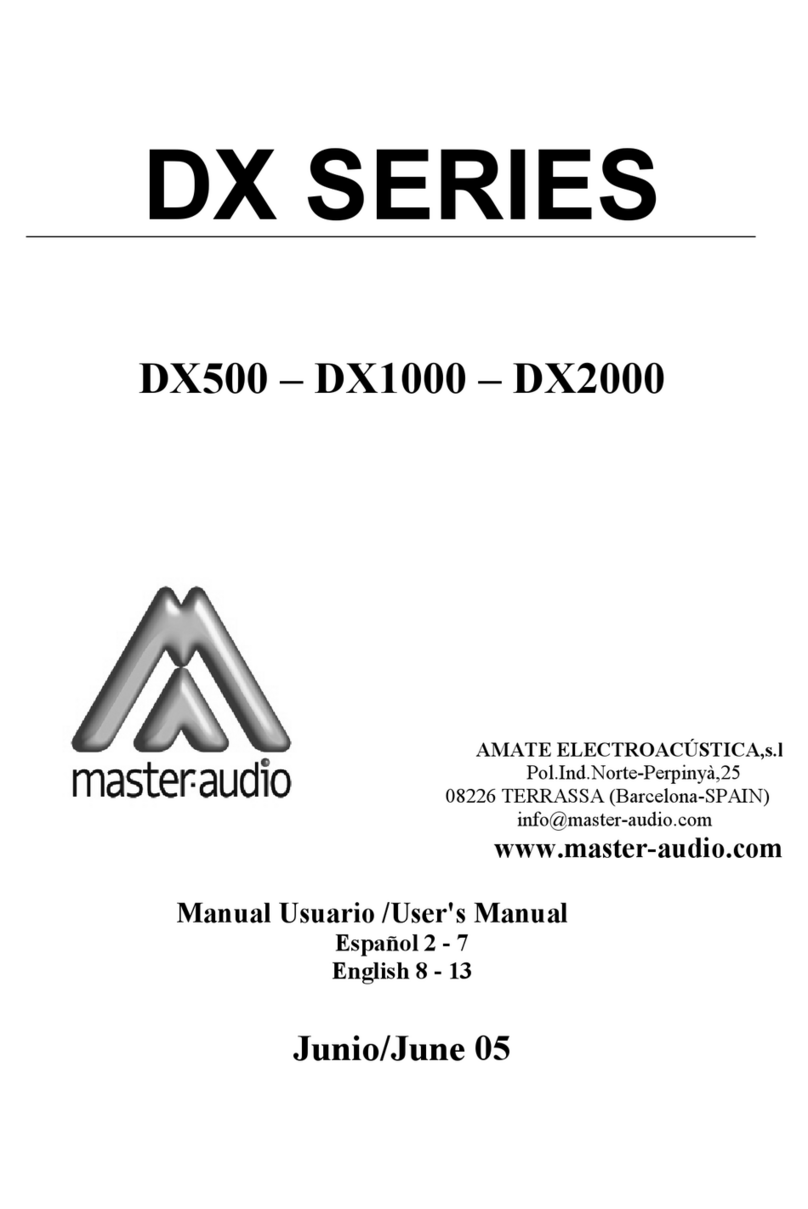- 5 -
(*) NOTA: Este equipo sigue el esquema de conexionado de masas
especificado por el estándar AES48-2005 de la Audio Engineering Society,
sobre interconexiones de equipos de audio con circuitos activos.
Por este motivo, cuando se desea conectar una salida no balanceada al
amplificador se recomienda no utilizar el Pin 1 del XLR, y en ningún caso
conectarlo con el Pin 3. Si se utiliza cable mallado se puede conectar un
extremo de la malla al Pin1 del XLR y dejar el otro extremo sin conectar para
conseguir cierto apantallamiento. La conexión del Pin 1 se recomienda
únicamente si el equipo con la salida no balanceada tiene una conexión
específica para la malla (tierra), separada de la masa o referencia de señal.
7 – MODOS de FUNCIONAMIENTO
Stereo
En este modo cada uno de los canales del amplificador funciona
independientemente del otro. Para seleccionarlo, asegurarse de que
el Selector de MODE, situado junto a la sección de Entradas
(BALANCED INPUTS), se encuentra en la posición STEREO.
Parallel
Esta función envía la señal introducida en la entrada del CHA a
los dos módulos de potencia (CHA y CHB), ignorando la señal
introducida en la entrada del CHB. Esta opción es interesante en
el caso de que el amplificador se utilice para alimentar varios
altavoces con la misma señal, ya que elimina la necesidad de
realizar interconexiones entre canales. Para su utilización, debe
posicionarse el conmutador MODE, en su punto central
(PARALLEL). Se activará el led frontal PARALLEL.
Bridge (Mono)
En esta posición ambos canales se utilizan como un único
amplificador, capaz de entregar el doble de la potencia. Para
trabajar en este modo, introducir la señal por la entrada del CHA.
En la salida de altavoces se utilizará la siguiente conexión: el polo
+ del altavoz se conectará al pin +1 del Speakon del CH A, o al
borne Rojo del CH A. Y el polo – del altavoz, al pin +2 del
Speakon del CH A, o al borne Rojo del CH B.
Para su utilización en modo MONO, debe colocarse el conmutador MODE, en su
posición superior (BRIDGE). En esta circunstancia se iluminará el indicador
correspondiente situado en el panel frontal sobre el control del Canal A (BRIDGE).
La ganancia se controlará únicamente mediante el potenciómetro del canal A.
ATENCIÓN: En este modo de funcionamiento se recomienda utilizar una carga de 8
Ohms. Si la impedancia de la carga es de 4 Ohms, cada módulo trabajará a una
carga equivalente de 2 Ohms, con lo que no se recomiendan instalaciones
permanentes en este modo (ver apartado “Capacidad de Carga”). Consultar la tabla
de características técnicas para conocer la potencia entregada en modo Bridge.
PRECAUCIÓN: Puede resultar peligroso manipular los contactos en esta situación
por personal no especializado,dada la elevada tensión que se maneja.
